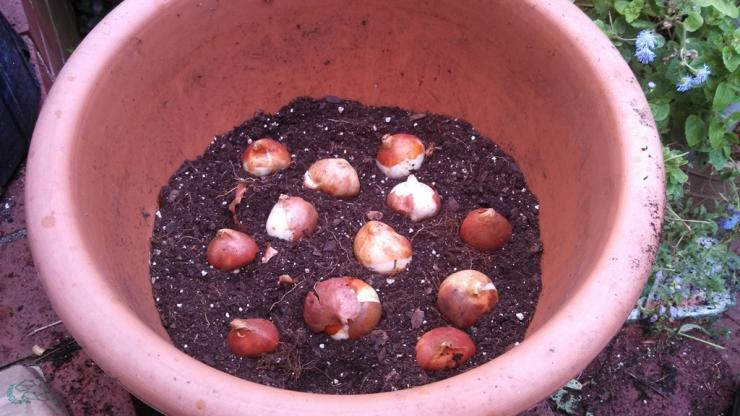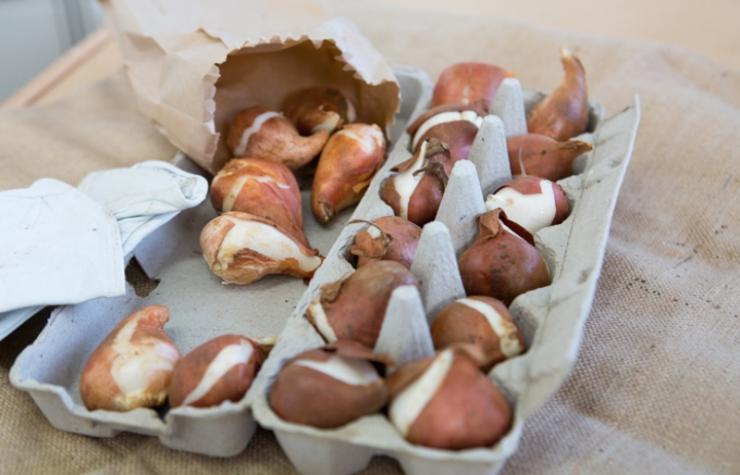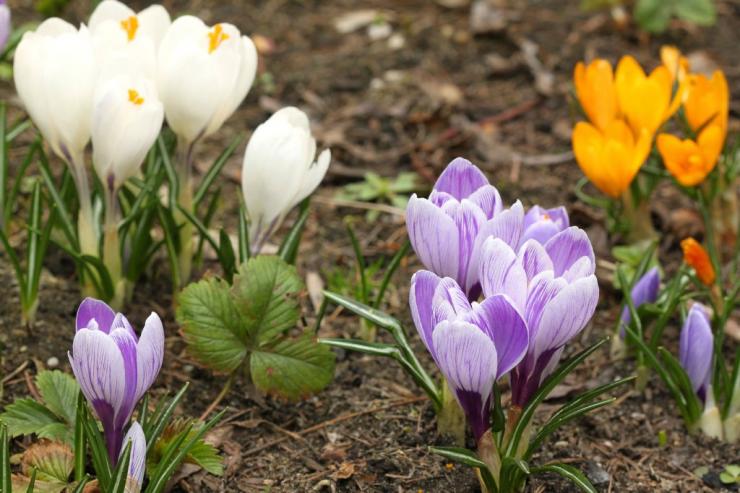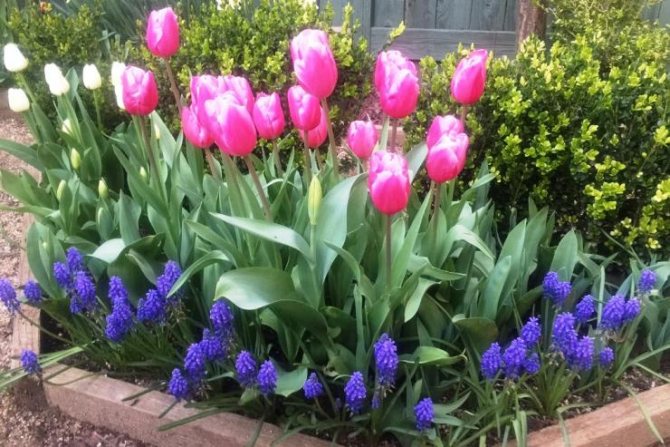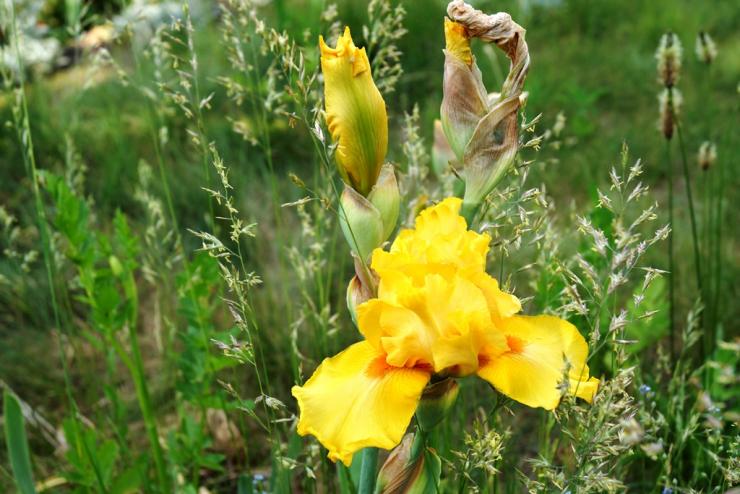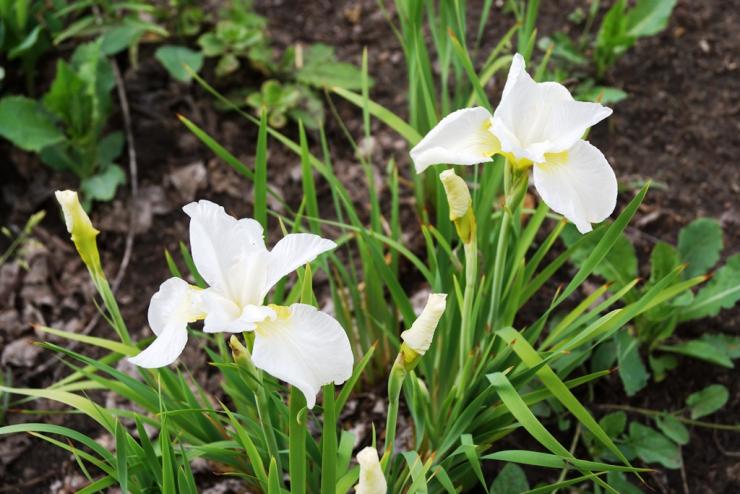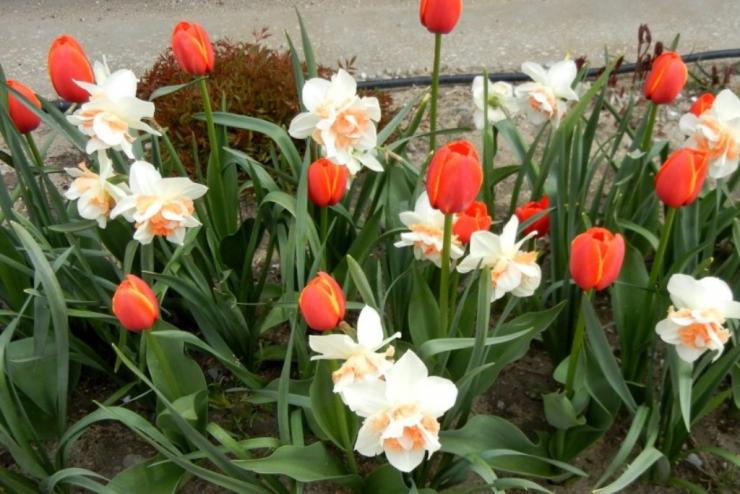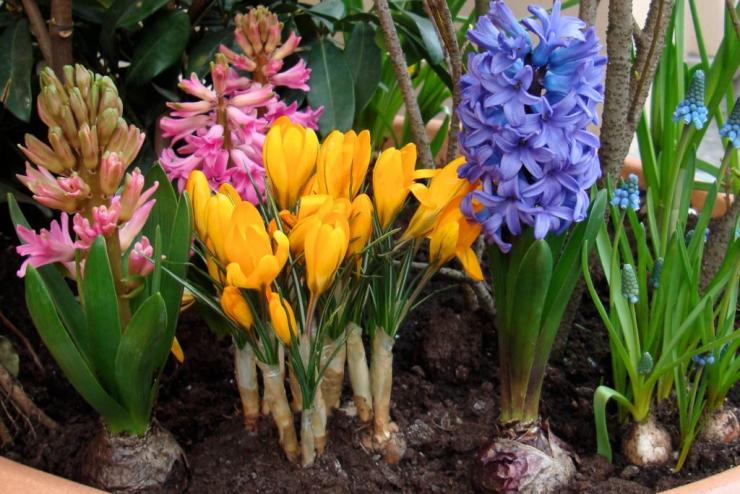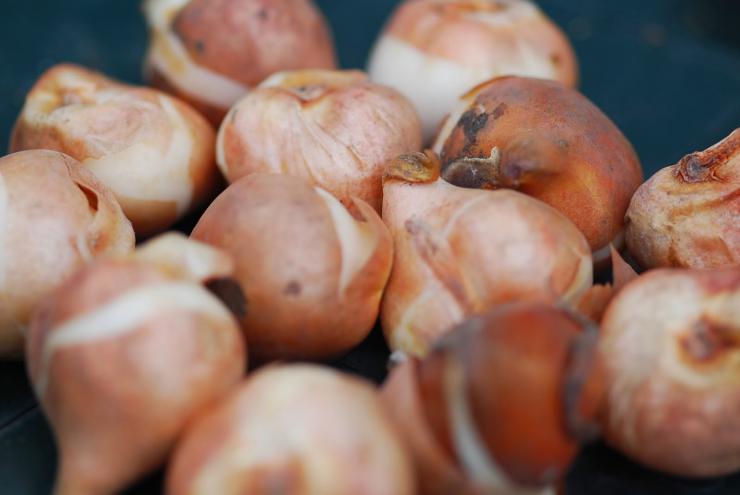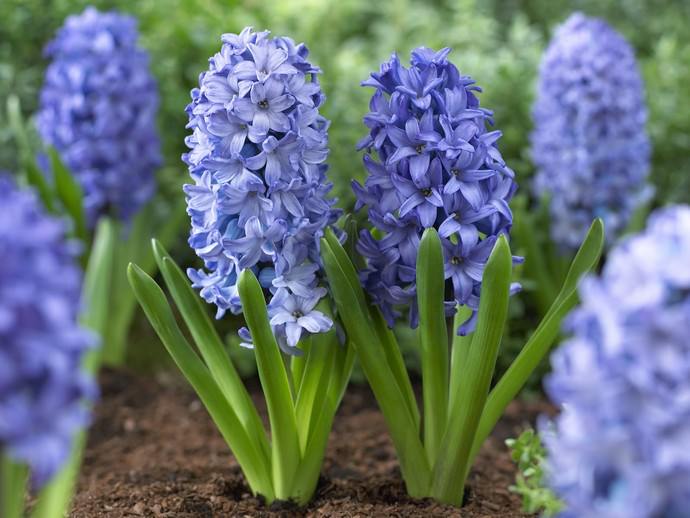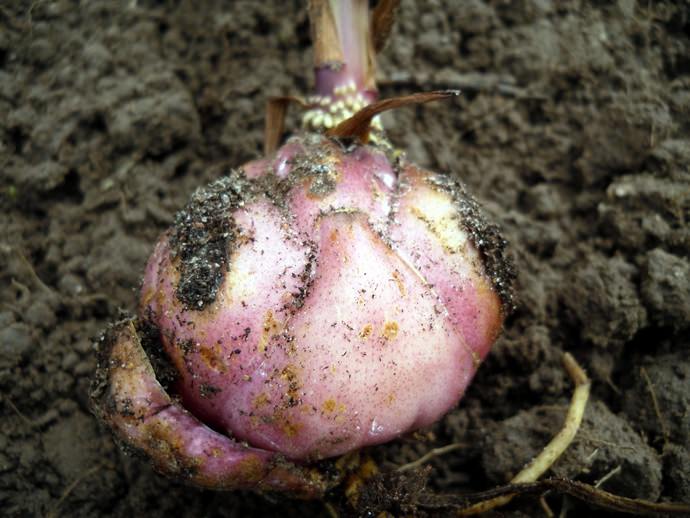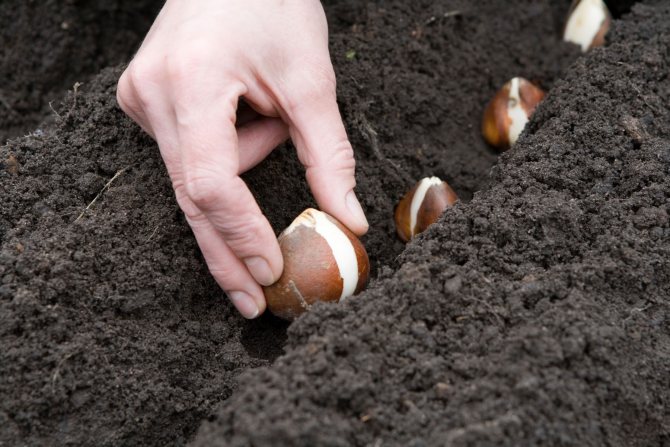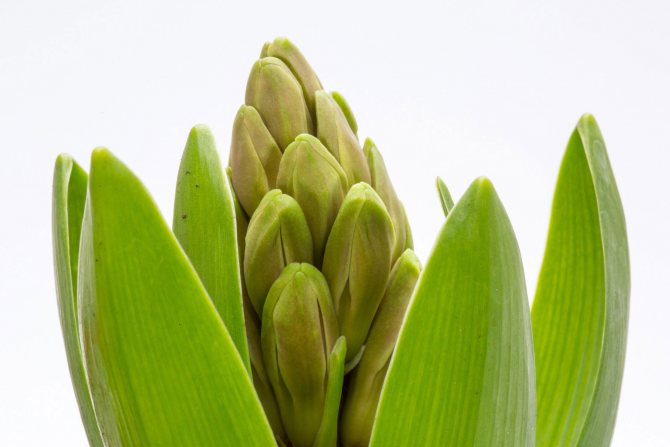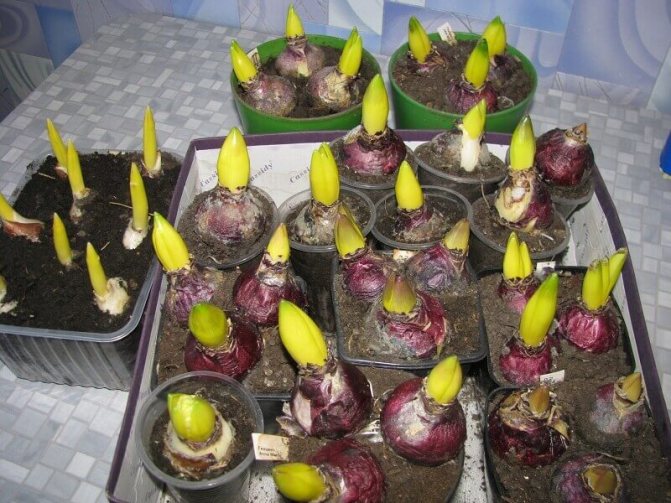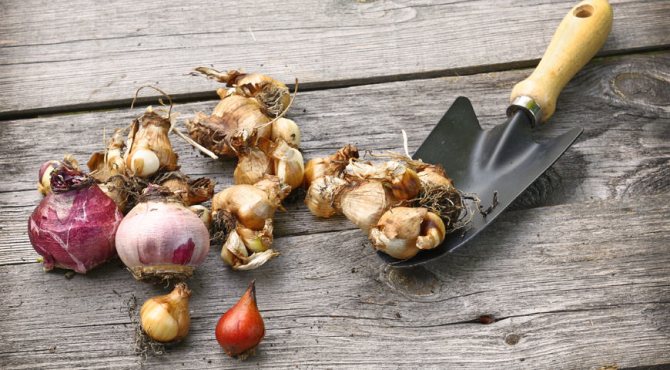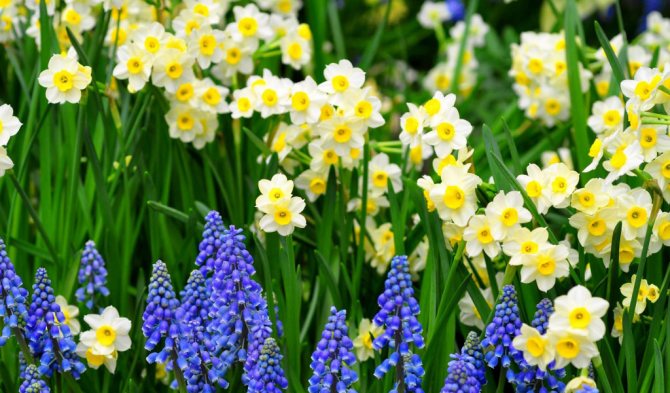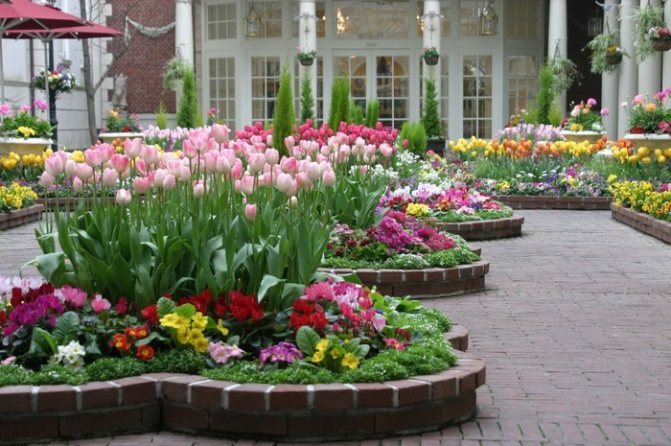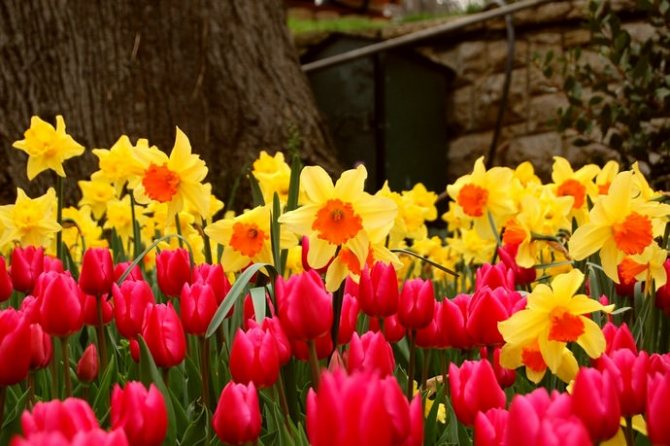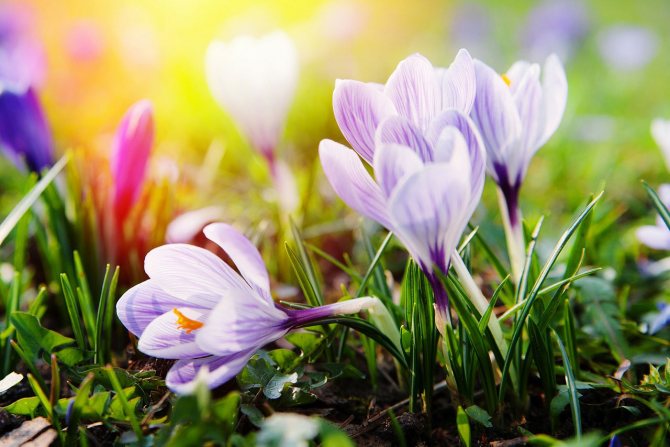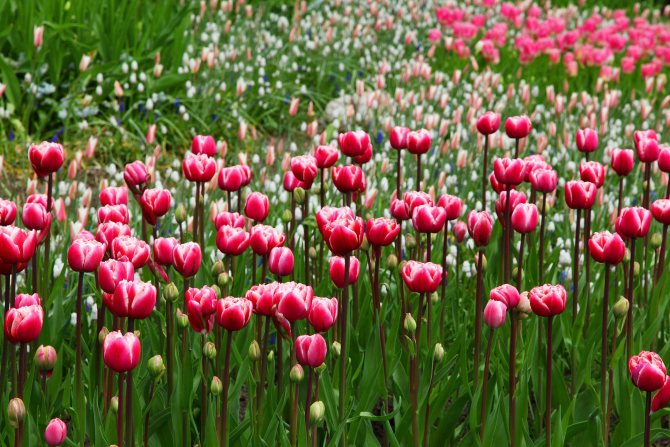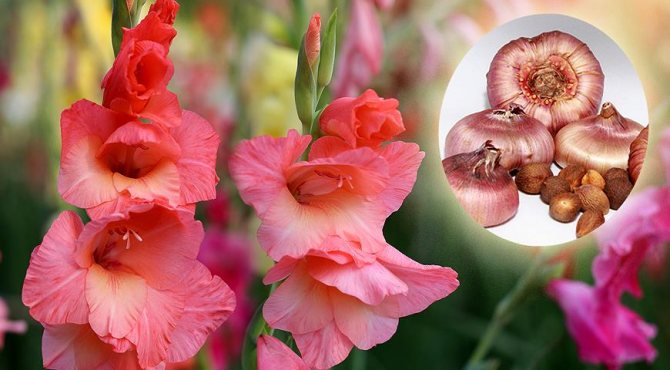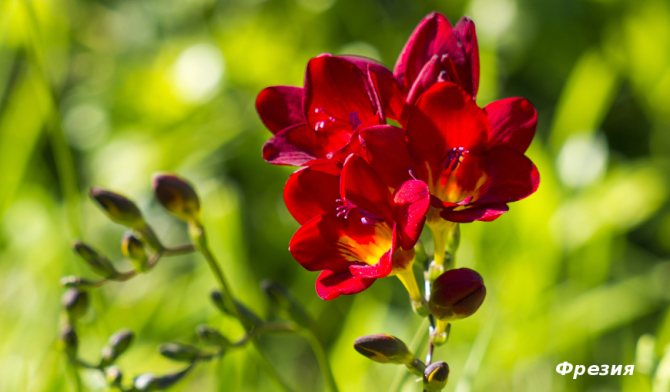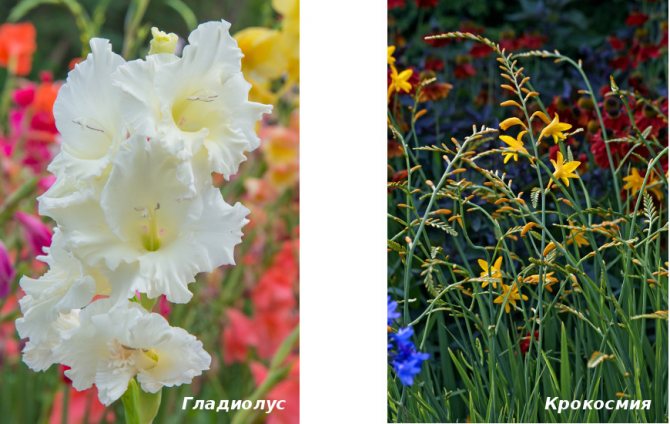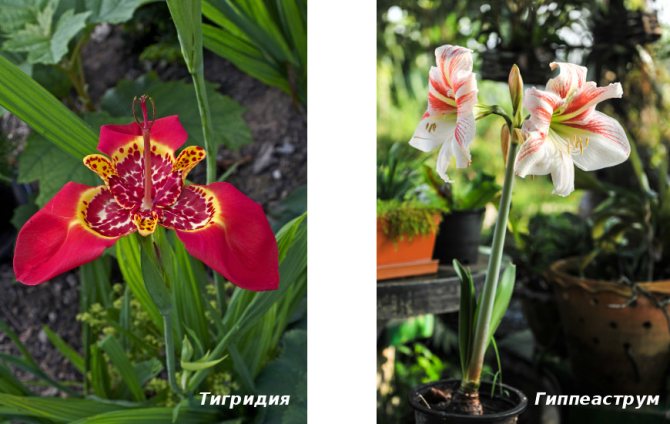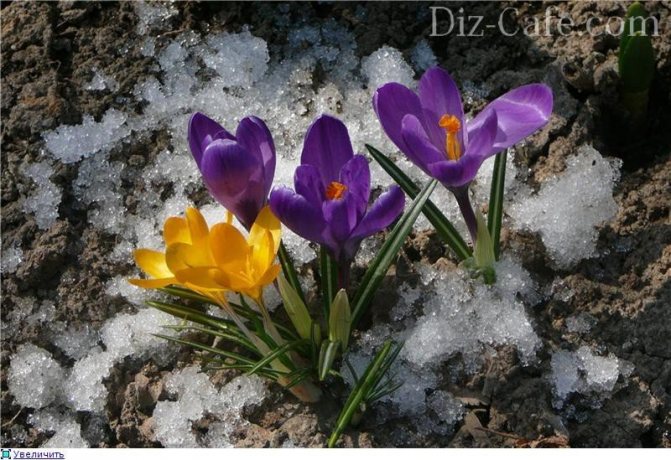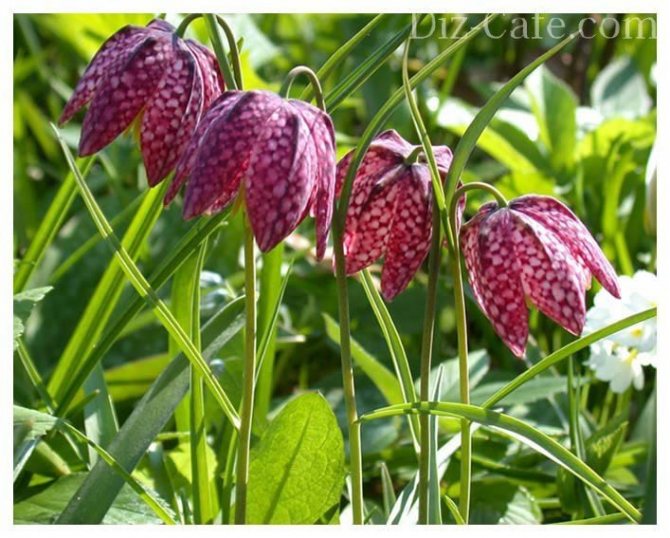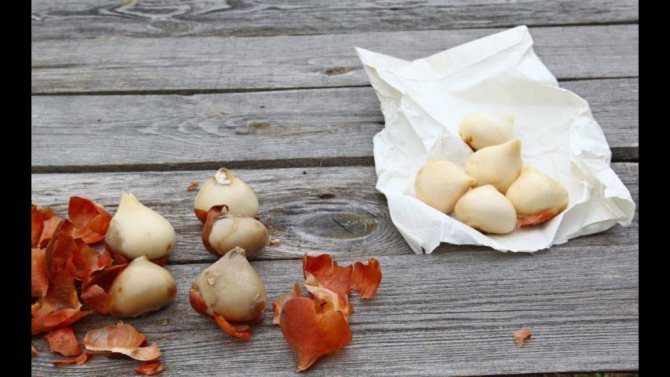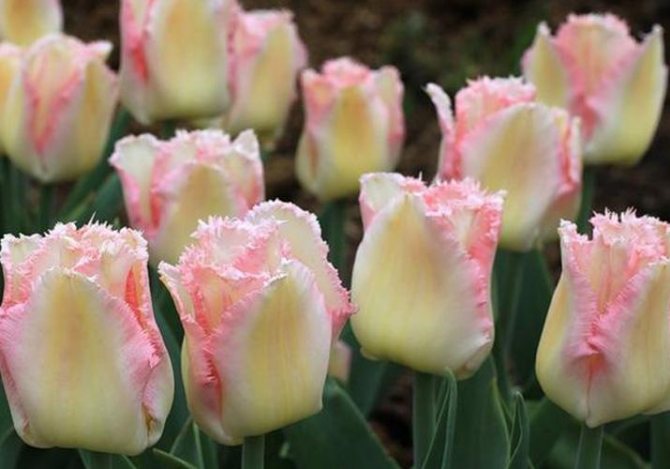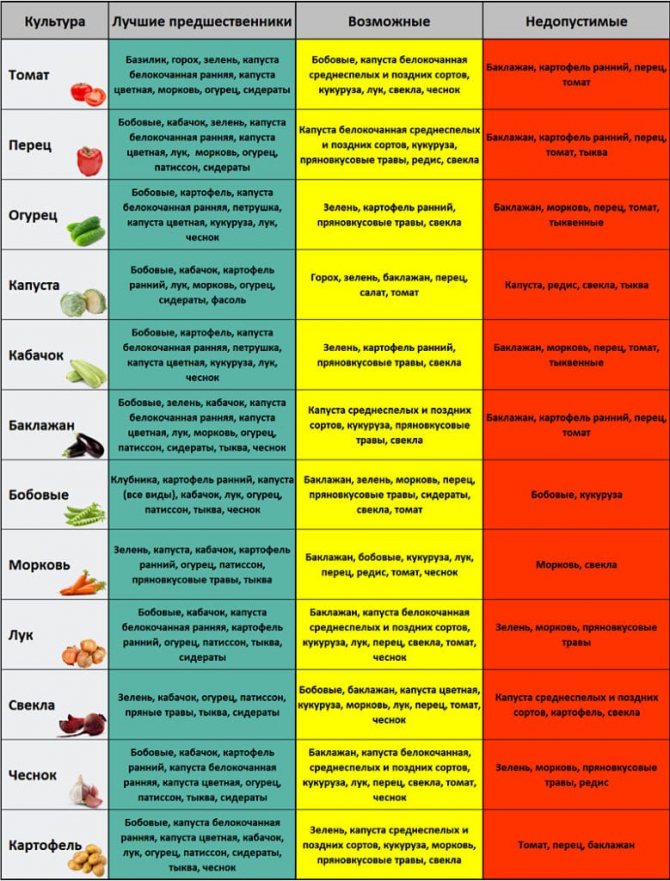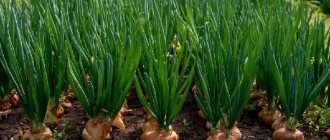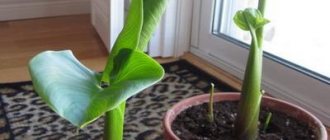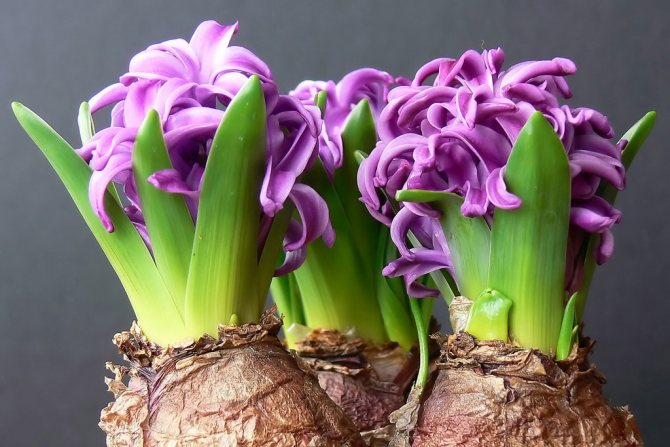
With the arrival of autumn, it's time to think about what our gardens will be like in spring. Anyone who dreams of blooming spring flower beds should definitely plant bulbous plants in their area. Some of them can be planted only in spring, others also in summer. But many bulbous flowers are planted in the fall. And although they bloom, as a rule, in the spring, they are called autumn. When other flowers are still growing, and the trees are beginning to wake up, the autumn bulbs are already blooming. They will become the real pearl of your garden.
Planting bulbous flowers before winter will ensure their early awakening. Now, when all their other bedding brothers shed their leaves and go into a state of sleep, these wonderful plants are already preparing to delight us with the first warm days.
Flowers that develop from bulbs are an ideal solution even for novice gardeners, because they are quite unpretentious to care for. The main requirement is a thorough selection of planting material and landing site.
The advantages of planting flowers in autumn
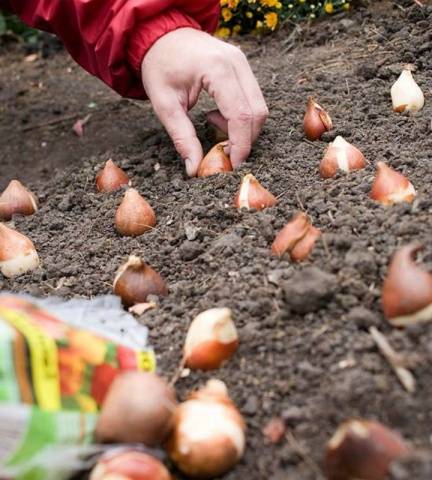

Each period for planting flowers has its own advantages. Further, a number of advantages of autumn planting will be given:
- In the fall, there is less hassle in the garden. Bulbous flowers can be planted after harvest and gardening. Thanks to this, the work can be done in detail and measuredly, which cannot be said about spring, since during this period, in addition to planting flowers, it is necessary to prepare the soil for planting vegetables, sow and grow seedlings.
- In the fall, quality planting material can be bought on sale at better prices.
- The stratification of bulbs and plant seeds is natural in autumn. So, you do not have to additionally soak and keep the planting material in the refrigerator.
- Plants are easier to transplant in the cool season. The number of pests and pathogenic bacteria decreases with the onset of autumn cold weather. The still warm soil allows the bulbs to take root before frost, which helps the flowers germinate with the first warmth of spring.
- Return frosts are not terrible for bulbs of spring flowering plants that have hardened over the winter.
- With autumn planting, the growth of flowers in the spring begins earlier, and accordingly, they will delight with flowering in early spring.
- With the seasonal fall rains, you can free yourself from watering the bulbous flowers.
How to store it correctly
Store the bulbs in a cool and ventilated area (but not cold) until planting.
Bulbs of such plants as snowdrop, white flower, blueberry, chionodox, pushkinia are not covered with dry filmy scales, so we store them in slightly damp sawdust or peat in plastic bags.
Just do not forget to make holes in the bag so that there is air access. It is advisable not to overmoisten the substrate in which the bulbs are stored so that the plant does not grow ahead of time.
Bulbs of hyacinths, daffodils, hazel grouses, tulips and decorative bows are not afraid of heat and even need it. A flower bud is laid in them at a high temperature and in dryness. But here, too, one must know when to stop.
What flowers are planted in the autumn
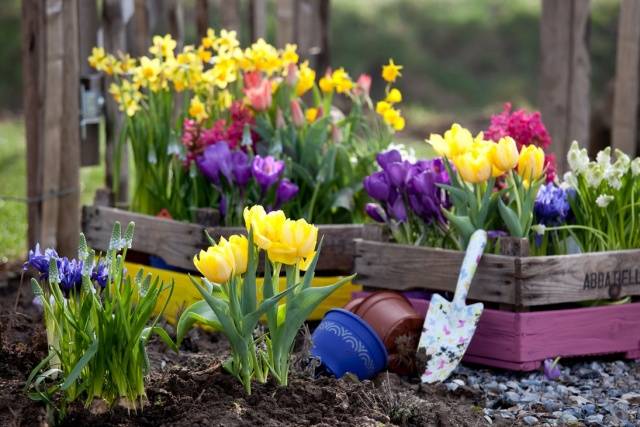

In the fall, bulbous flowers are divided, planted and planted. Among them:
- Crocuses.
- Hyacinths.
- Tulips.
- Muscari.
- Phlox paniculata.
- Pushkinia.
- Scylla.
- Lilies.
- Sedum.
- Astilba.
- Peonies.
- Evening primrose shrub.
- Adonis.
- Clematis.
- Aconite.
- Rudbeckia.
- Lupine.
- Brunerra large-leaved.
- Echinacea
Annuals planted in autumn bloom better and longer in spring. This is due to natural soil stratification.
When to plant bulbous flowering plants


Spring flowers from the bulbous family require a period of cold dormancy for flowering. So, from the second half of August to mid-September, the following bulbous flowers are planted:
- Crocuses.
- Astilbe.
- Daffodils.
- Muscari.
- Rudbeckia.
- Phlox.
- Pushkin.
- Solidago.
- Chionodox.
- Grouse or fritillaria.
In the last decade of September, lilies, tulips and daylilies can be planted. Second-class planting material will not germinate, so you should not buy unsold low-quality bulbs with signs of drying out, rot and mold. The best option is to purchase planting material from reliable sources such as nurseries, garden centers and catalogs with a good reputation.
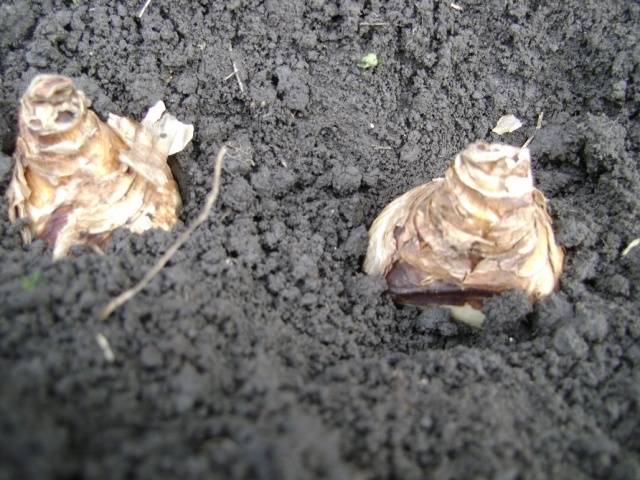

Important! The average daily air temperature when planting flowers in the fall should be at least + 5C.
Crocosmia, or montbretia / Crocosmia, Montbretia
The plant is up to a meter high, blooms in July-August with medium-sized (3-5 cm in diameter), orange-red or yellow flowers. The obsolete name montbretium was given by the name of the French botanist de Montbrette and is still used in everyday life. Most widely used is Crocosmia crocosmiiflora (common crocosmia, garden montbrecia) - a highly decorative garden hybrid obtained by the French breeder Lemoine in 1880.
All the features of crocosmia planting
1. When to plant crocosmia... Planted in April - early May.
2. Where to plant crocosmia... Needs a sunny location: in shaded areas it can stretch out and not even bloom. Prefers well-heated areas, does not tolerate moisture stagnation. Prefers soil rich in organic matter. Corms are planted to a depth of 7-10 cm, with a distance of 10-12 cm between them. When the flowering ends, it is important to cut the flower stalks so that the corms ripen better.
3. When to dig up crocosmia... Crocosmia overwinters unstably, and experts still recommend growing it in the same way as gladioli: dig up the corms in the second half of October, dry and store at a temperature of about +5 ° C.
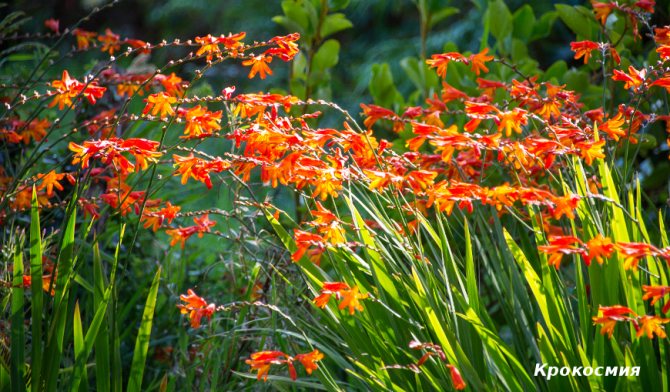

Selection of place and soil
Bulbous plants bloom when the trees have not yet blossomed, so they can be planted under them. In flower compositions of rockeries and rock gardens, scyllas or woodlands and crocuses look great.
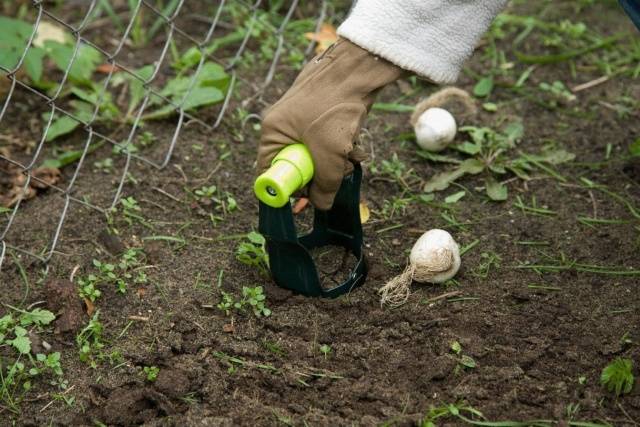

The soil must be fertile. Water should not stagnate in it. Clay soil must be mixed with sand. In some cases, heavy clogged soil is drained. The soil should be fertilized and watered before planting flowering plants. If necessary, it is also compacted.
Eukomis, eukomis / Eucomis
A perennial bulbous plant with a rosette of narrow, long leaves, from which a flower arrow with many star-shaped flowers rises, similar to a small pineapple. Most often grown eukomis bicolor (Eucomis bicolor): a plant with a height of 40-60 cm. Appearing at the end of summer, light green flowers and bracts have a purple frame.
Features of planting eukomis in the middle lane and the Moscow region
1. When to plant eukomis... Cultivated in the same way as gladiolus.
2. Where to plant eukomis. Sunny location with normal garden soils.
3. When to dig eukomis... The bulbs can withstand light frosts, they must be dug up for the winter and stored at a positive room temperature. Eukomis is often grown in container planting, potted out in February and kept cool and light. In mid-May, the plants are taken out into the garden.Eukomis can be grown in large containers or tubs, which are exposed to the open air in the second half of May. In summer, the bushes are watered abundantly and regularly (once a week) fed with complex mineral fertilizer, and at the beginning of the summer season with systemic fertilizer.
Landing features
Before planting, you need to inspect each bulb. In this case, the plants will bloom well in spring, they will not hurt. Damaged bulbs are treated in a solution of potassium permanganate. Damage sites also need to be treated with brilliant green. So that all flowers in the beds or flower beds do not get sick after you have planted them, do not use those bulbs that have traces of disease and rotting for planting.
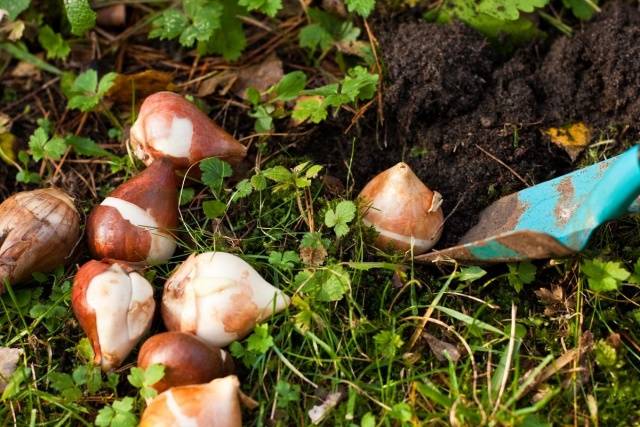

You need to plant bulbous flowers at a certain depth, but it all depends on the type of plant. Although there is one general rule - the layer of earth should correspond to three diameters of the bulb. For example, the diameter of the planting material is 1 cm, then it must be sprinkled with earth by 3 cm.
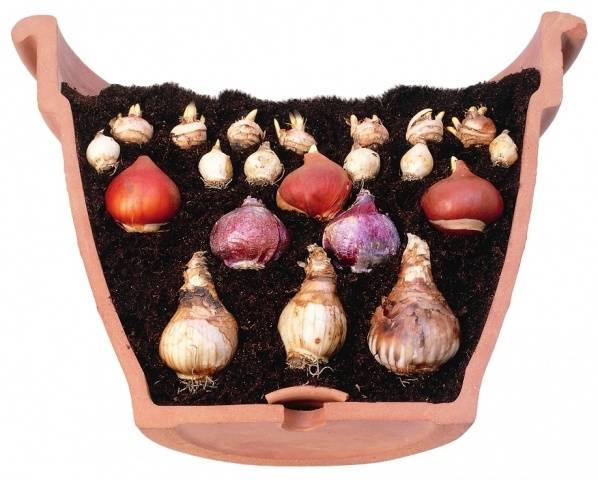

Advice! Landing sites can be marked with pegs so that you do not accidentally dig them up in the spring.
The easiest way to plant bulbs is on the lawn. To do this, a layer of sod is simply removed and the bulbs are placed in the loosened soil, and then they are again covered with a layer of sod.
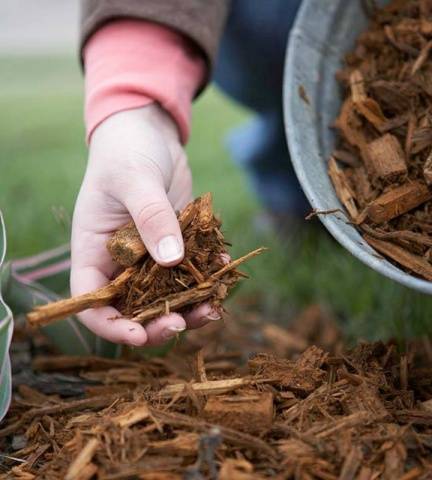

If you have to work with heavy soil, which is very compacted from rain, then sand should be added to the prepared hole before planting bulbous flowers in autumn, without reducing the planting depth. If it's a dry autumn, then the planted flower bulbs need to be watered abundantly, and then mulched. Fallen leaves or loose peat can serve as mulch.
A distance of 15–20 cm should be left between the bulbs. If you are planting large bulbs and they should be planted deep in the ground, this can be done not only by sprinkling with soil, but also by mulching and covering with spruce branches.
A warning! Hyacinths quickly rot, as they are very sensitive to high humidity and cold.
Therefore, after planting, they need to be covered with a greenhouse film. In the spring, you need to remove the film on time, as the bulbs can dry out.
Tulips are the least whimsical. The distance between the bulbs should be no more than 10 cm, and the depth of instillation should be equal to three diameters of the bulb.
In September
In the first decade of September, solidago, rudbeckia, astilde and phlox should be transplanted. Also, gardeners during this period share the bushes. In addition, small-bulbous plants are planted in the first half of September. These include chionodoxes, scyllas, crocuses, pushkinia and muscari.
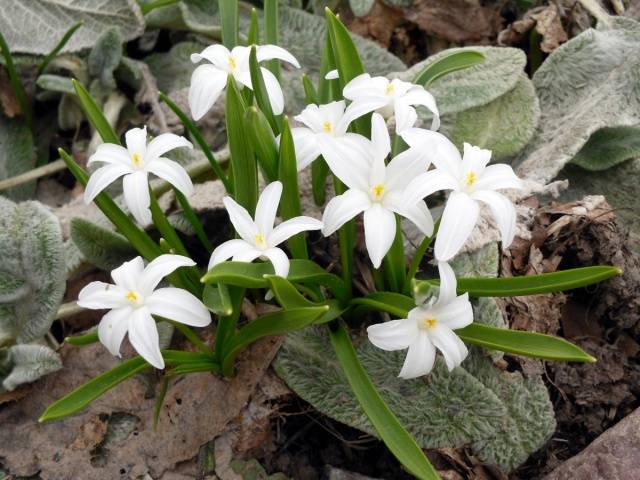

In the second decade of the month, daffodils are planted, and a week later - hyacinths. Tulips are planted in the last decade of September. The time of planting flowers must be observed. For example, if you plant daffodils in the third, and not in the second decade of the month, they will not develop roots, as a result of which the plants may not survive wintering.
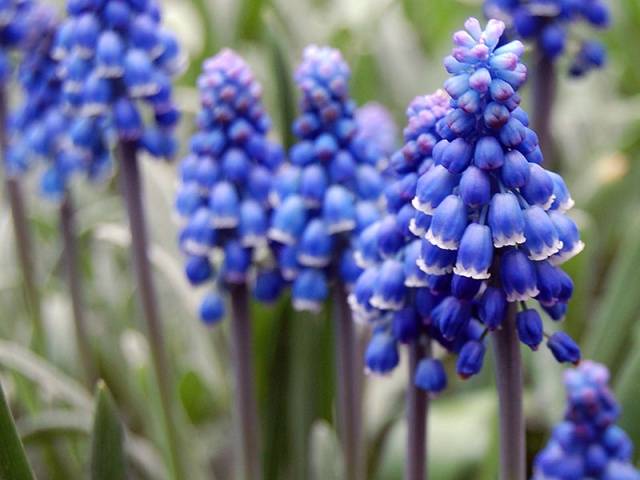

In October
Tulips and hyacinths can be planted until mid-October. The hyacinths need to be planted deep in the ground - 17–20 cm, depending on the diameter of the bulb. To avoid waterlogging of the soil during heavy rains, the planting site of these plants should be covered with a film.
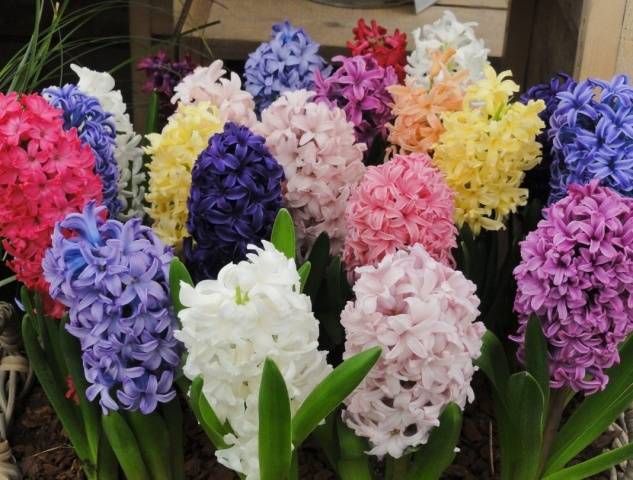

Tulips adapt well to damp and cold soil. Their planting depth varies between 15-18 cm, depending on the size of the bulbs. Please note that tulips planted in mid-October are easier to deal with diseases and viruses, such as variegation.
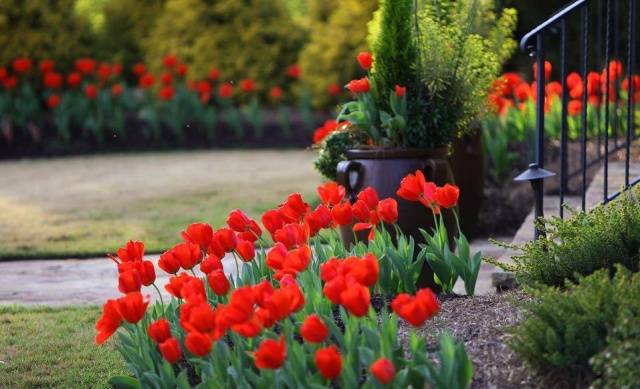

In November
At this time, only tulips can be planted, and then provided that the year turned out to be warm and this month the air temperature still does not fall below + 5C. Otherwise, the bulbs will not only slow down in growth, but may even die.
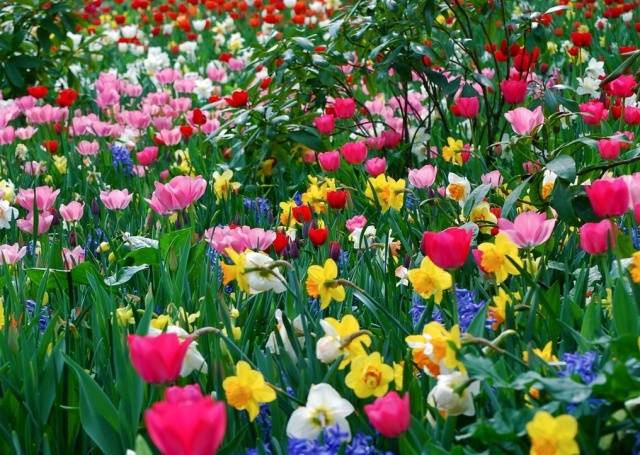

If you bought tulip bulbs late, you can plant them at home in a container for distillation.
Preparing the bulbs
Before planting the bulbs, it is necessary to carefully examine and discard specimens with traces of rotting and disease without regret, otherwise they will infect the entire flower bed. If there is mechanical damage on a dense healthy bulb, they are carefully treated with brilliant green and dried.
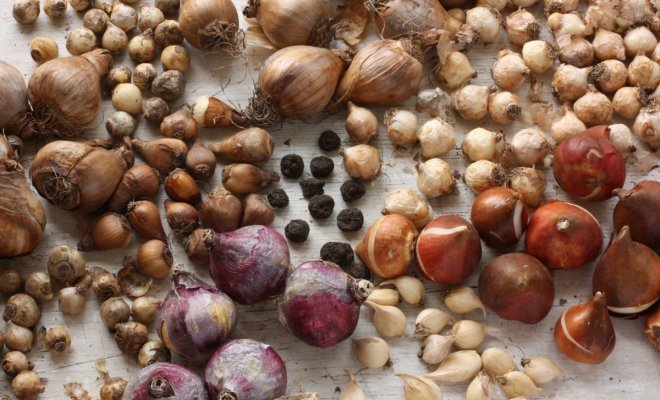

Before spring planting, dry bulbs of anemones and ranunculus are soaked for 2-3 hours in warm water with the addition of any growth stimulant.

